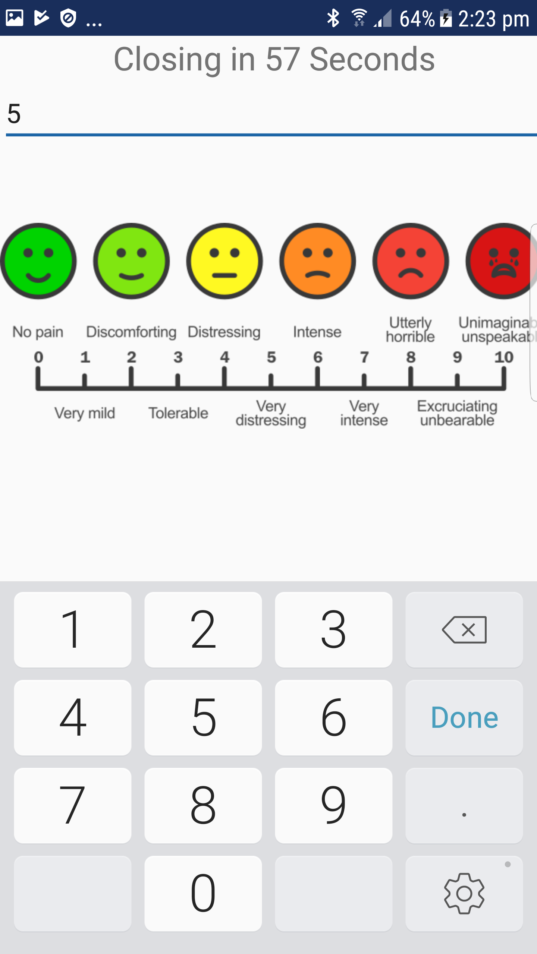
One in five Australians living with chronic pain. We’ve developed a mobile platform to help manage it.
Pain. We’ve all experienced it in some form. Whether it was that first shocking expulsion from the warm womb to the frigid outside world, jamming your finger in a car door, or tearing your ACL playing footy.
But for some people, pain comes a-knocking… and never leaves. It’s known as chronic pain, and it’s a real problem for one in every five Australians.
Experiencing life through a pain haze
Chronic pain can either be an everyday occurrence or a recurring event. It can be caused by one or a range of conditions. Think everything from osteoarthritis to fibromyalgia, lingering back problems, migraines, endometriosis and more. Or there might not even be a known cause.
For many people, it morphs from being a feeling to an all-consuming experience. It can disturb your sleep, wear you down, drill away at your mental health and your overall resilience.
Many people with chronic pain rely on painkillers for some relief. Often this is opioids such as codeine, oxycodone, fentanyl or morphine. But long-term use of these poses serious risks, including dependence and addiction, and even accidental fatal overdose. This is a serious problem in Australia. According to a 2019 report from Deloitte Access Economics with Pain Australia, more Aussies die from accidental opioid overdose than from illicit drugs.
Managing chronic pain and pain medication can be difficult, but good management can help improve people’s quality of life.

The Pain ROADMAP app asks patients to rate their pain levels throughout the day.
Activity pacing and tracking
One way to manage pain is called activating pacing. It’s centred around the idea that moving too much – or not moving enough, staying in one posture for a long time – can trigger increased pain. Chronic pain suffers can work with their clinicians to identify the activities that trigger symptoms. Then by breaking up and rescheduling those activities, a person can reduce their pain flareups. And possibly reduce the amount of painkillers they otherwise need to get them through the day.
However, some people struggle to use activity pacing strategies after they receive treatment. The challenge lies in figuring out what the problematic activities are for each person and finding a way to measure whether certain changes actually make a difference.
This is where the digital health gurus at our Australian e-Health Research Centre come in.
Mapping out pain and activities with Pain ROADMAP
In collaboration with Postdoctoral Research Fellow Nicole Andrews at Metro North Hospital and Health Service and The University of Queensland’s RECOVER Injury Centre, our research scientist Dr David Ireland developed Pain ROADMAP. It’s a mobile platform made up of an app for patients with chronic pain and a portal for clinicians.
Using the app, people can keep a log of each activity they do throughout the day, their pain levels as they did those activities, and what pain medication they take and when. They also wear an actigraph accelerometer around their waist, which keeps track of when they are moving and resting.
This information all feeds into Pain ROADMAP’s clinical portal. Clinicians can then see a daily and weekly summary of each person’s pain intensity and variation. They can also see how the patients time is split between resting, working and leisure activities; and build up a picture of if and when they take pain medication.
Armed with this detailed information, clinicians can help patients work out how to better pace their activities through the day to reduce the frequency of intense periods of pain.

Patients can use Pain ROADMAP to record their activities, pain levels and medications.
Helping to stabilise pain
We put our Pain ROADMAP app and portal to the test in a three-month feasibility study. Twenty people with chronic pain used the app to track their activities, pain levels and pain medications, and their clinicians could see this information through the portal.
The study found that interventions using the app helped people reschedule activities. They found they had fewer periods of over-activity, the app helped stabilise their pain, and help them get an average 49 minutes more productivity out of their days.
Importantly, for five out of seven people in the study that relied on take-as-needed pain medication, they were able to stop taking it. And opioid medication decreased by 20 per cent on average.
We’re pleased to share that Pain ROADMAP was merit recipient for two awards at the National iAwards last night – congrats to our team and partners!
Next on the agenda, our researchers are looking at whether they can create a gamified version of the platform to support children with chronic pain.
Living with chronic pain can be challenging. If you or anyone you know needs help contact:
- Beyond Blue on 1300 22 46 36
- Lifeline on 13 11 14
- Discuss your concerns with your GP, friends or family.
The Australian Government’s Health Direct website also has useful information and resources about chronic pain and its management.


26th June 2020 at 10:20 am
Please add me to the mailing list.
16th October 2019 at 3:32 pm
Is there anyway a sufferer can put their name down on a list somewhere to get access to further alerts as this progresses?
24th October 2019 at 3:00 pm
Hi Ruth – We are starting a general mailing list for this project. The researcher has added you to that list.
Hope this helps.
Kind regards,
Kashmi
Team CSIRO
1st September 2019 at 8:50 am
Where can this be downloaded from?
2nd September 2019 at 1:35 pm
Hi there,
At the moment it is not publicly available as the ethics has expired. We are currently setting up a multi-site implementation trial for both adults and children with chronic pain. The app and associated technology should be available to clients of participating health clinics hopefully sometime in 2020. The list of participating health clinics have not yet been finalized so I can’t give a list of these as yet.
Kind regards,
Kashmi
CSIRO Social Media Team
30th August 2019 at 4:54 pm
This sounds great but it doesn’t clearly say if it made it past the feasibility stage. Will it become more widely available?
2nd September 2019 at 1:36 pm
Hi Jen,
It has made it past an initial feasibility stage. We are currently setting up a multi-site implementation trial for both adults and children with chronic pain. The app and associated technology will be available to clients of participating health clinics hopefully sometime in 2020. The list of participating health clinics has not yet been finalised so I can’t give a list of these as yet.
Kind regards,
Kashmi
CSIRO Social Media Team
30th August 2019 at 3:49 pm
Very interesting thanks for the informatio